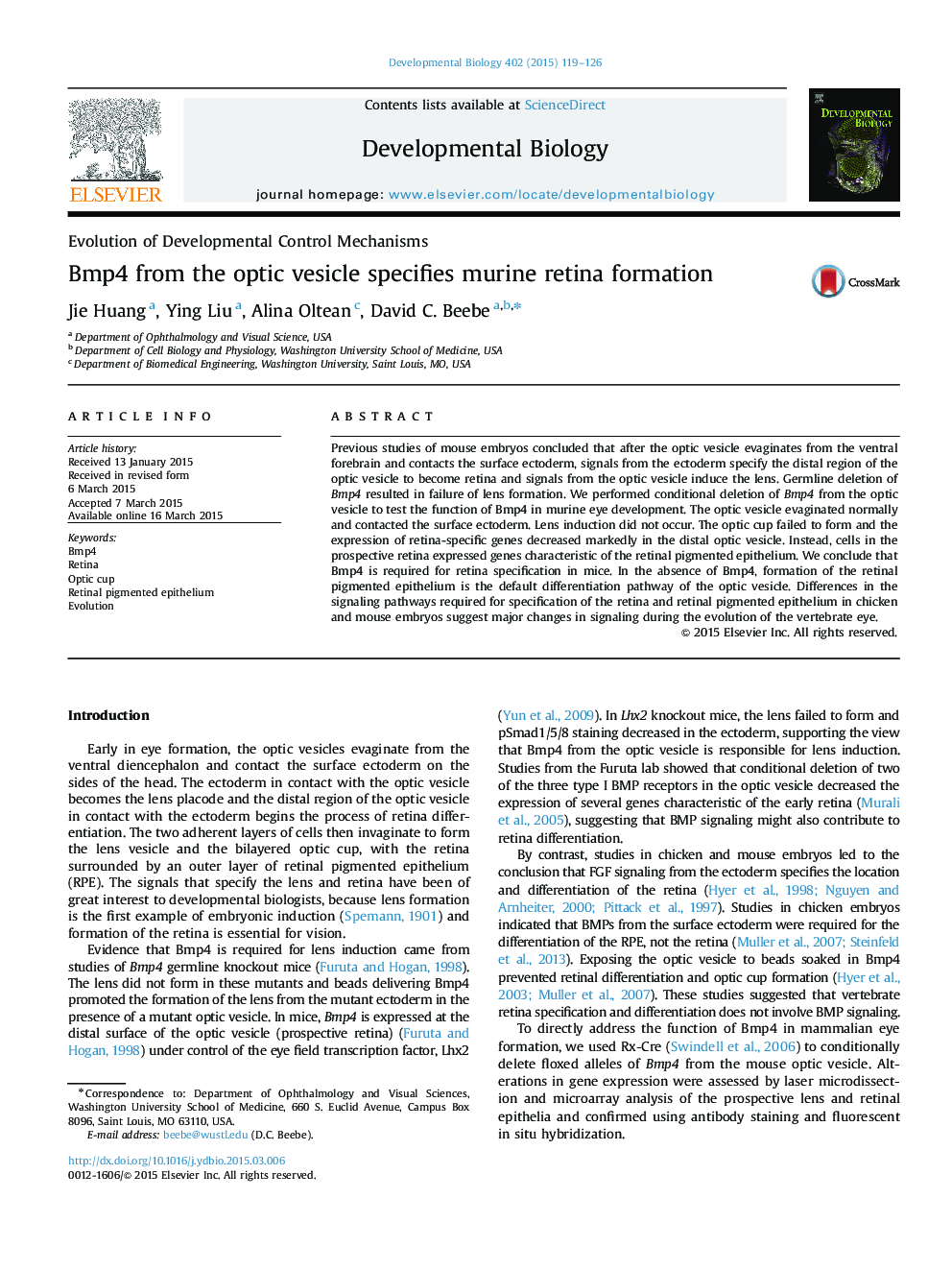| Article ID | Journal | Published Year | Pages | File Type |
|---|---|---|---|---|
| 2172918 | Developmental Biology | 2015 | 8 Pages |
•Deletion of Bmp4 from the optic vesicle prevented retina and lens formation.•In the absence of Bmp4 the entire optic vesicle became retinal pigmented epithelium.•Bmp4 is required for RPE formation in chicken embryos, the opposite of its role in mice.•Caution should be used in equating results from chicken eye development to mammals.
Previous studies of mouse embryos concluded that after the optic vesicle evaginates from the ventral forebrain and contacts the surface ectoderm, signals from the ectoderm specify the distal region of the optic vesicle to become retina and signals from the optic vesicle induce the lens. Germline deletion of Bmp4 resulted in failure of lens formation. We performed conditional deletion of Bmp4 from the optic vesicle to test the function of Bmp4 in murine eye development. The optic vesicle evaginated normally and contacted the surface ectoderm. Lens induction did not occur. The optic cup failed to form and the expression of retina-specific genes decreased markedly in the distal optic vesicle. Instead, cells in the prospective retina expressed genes characteristic of the retinal pigmented epithelium. We conclude that Bmp4 is required for retina specification in mice. In the absence of Bmp4, formation of the retinal pigmented epithelium is the default differentiation pathway of the optic vesicle. Differences in the signaling pathways required for specification of the retina and retinal pigmented epithelium in chicken and mouse embryos suggest major changes in signaling during the evolution of the vertebrate eye.
